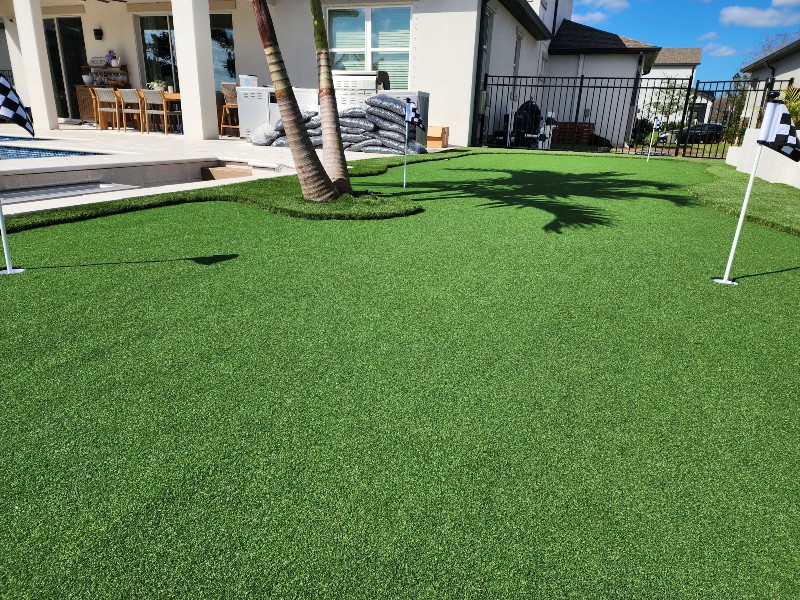Artificial grass, also known as synthetic turf, has become an increasingly popular landscaping option for homeowners, businesses, and municipalities. Beyond its aesthetic appeal and low maintenance requirements, artificial grass offers a range of environmental benefits that contribute to sustainability and conservation efforts. In this article, we’ll delve into the environmental advantages of artificial grass and how it can help create greener, more eco-friendly spaces.
1. Water Conservation
One of the most significant environmental benefits of synthetic turf is its ability to conserve water. Unlike natural grass, which requires regular watering to stay green and healthy, synthetic turf does not need irrigation once installed. By eliminating the need for watering, artificial grass helps reduce water consumption, particularly in regions facing water scarcity or drought conditions. This not only conserves valuable freshwater resources but also lowers utility bills and promotes sustainable water management practices.
2. Reduction of Chemical Inputs
Maintaining natural grass lawns often involves the use of fertilizers, pesticides, and herbicides to promote growth and control pests. These chemicals can leach into the soil and waterways, causing pollution and harming ecosystems. Artificial grass eliminates the need for chemical inputs, creating a safer and more environmentally friendly outdoor environment. By reducing chemical runoff and contamination, synthetic turf supports biodiversity and protects water quality, contributing to healthier ecosystems and habitats.
3. Decreased Greenhouse Gas Emissions
Traditional lawn care practices, such as mowing, edging, and leaf blowing, rely on gas-powered equipment that emits greenhouse gases and other pollutants into the atmosphere. Artificial turf requires minimal maintenance and eliminates the need for gas-powered lawn equipment, resulting in reduced emissions and improved air quality. By transitioning to synthetic turf, homeowners and businesses can lower their carbon footprint and contribute to efforts to mitigate climate change.
4. Preservation of Natural Resources
The production of natural grass requires significant resources, including land, water, fertilizers, and energy. In contrast, artificial grass is made from synthetic materials that require fewer resources to manufacture and install. By choosing synthetic turf over natural grass, individuals and organizations can help conserve natural resources, minimize habitat destruction, and preserve ecosystems. Additionally, synthetic turf is often made from recycled materials, further reducing its environmental impact and promoting circular economy principles.
5. Sustainable Land Use
Artificial grass offers opportunities for sustainable land use and development in urban and suburban areas. Its versatility and durability make it suitable for a wide range of applications, from residential lawns to public parks, sports fields, and commercial landscapes. By replacing natural grass with synthetic turf, landowners can reduce the need for land conversion and urban sprawl, preserving green spaces and promoting biodiversity in densely populated areas.
Artificial grass offers a host of environmental benefits that make it an attractive alternative to natural grass. From water conservation and reduced chemical inputs to decreased greenhouse gas emissions and sustainable land use, synthetic turf plays a vital role in promoting environmental sustainability and conservation. By embracing artificial grass as a landscaping solution, individuals, businesses, and communities can create greener, more eco-friendly spaces that benefit both people and the planet.
TK Turf is committed to providing environmentally friendly artificial grass solutions for your outdoor landscaping needs. Contact us today to learn more about our sustainable products and services and take the first step toward a greener future.

601 N Ashley Dr Suite #1100, Tampa, FL. 33602
(813) 534-4220
https://turfgrasstampabay.com/

Recent Comments